Hello, fellow plant lovers! As April unfolds its vibrant palette, let’s talk about this month’s delightful herald, the daisy.
A symbol of innocence, purity, and new beginnings, the daisy invites us to refresh our perspectives and embrace the blooming opportunities of spring.
In our garden, daisies are more than just flowers; they are storytellers, each bloom holding whispers of folklore and tradition.
This month, as these cheerful flowers dot the landscape, we celebrate not only their beauty but also their simplicity and resilience. They remind us to find joy in the small things and to approach life with a fresh, open heart, just as a daisy turns its face to the sun each morning.
So, come along as we explore the wonderful world of daisies. Whether you’re a seasoned gardener or a budding floral enthusiast, there’s something about these unassuming blooms that is sure to capture your heart and beautify your green space.
Let’s cherish this lovely messenger of April, and maybe even discover a few new reasons to plant some in our own backyards!
Overview of the Daisy
In my own garden, I’ve always admired the resilience and the almost carefree growth of daisies. They seem to thrive on neglect, popping up year after year with their joyful blooms.
There’s a delightful simplicity in how they bring life to a garden space, often becoming a backdrop for bees and butterflies.
Just last spring, I added a border of Shasta daisies along my walkway, and it transformed the space into a welcoming path of bright, nodding heads that seemed to greet each visitor.
Botanical Information
The term “daisy” commonly refers to several types of plants in the family Asteraceae, encompassing a variety of species and genera. The classic daisy, often pictured in children’s drawings, is scientifically known as Bellis perennis. This perennial herb hails originally from Europe but has since naturalized in many temperate regions worldwide.
Appearance and Characteristics
Daisies are recognizable by their iconic structure: a central disk surrounded by rays or petals, typically white, although some varieties can display a range of colors including pink, red, and yellow. This structure isn’t just a single flower but a composite of several smaller flowers or florets. The outer white petals are called ray florets, and the inner part, usually yellow, consists of disc florets. This design is not only beautiful but highly functional, aiding in their attraction to pollinators.
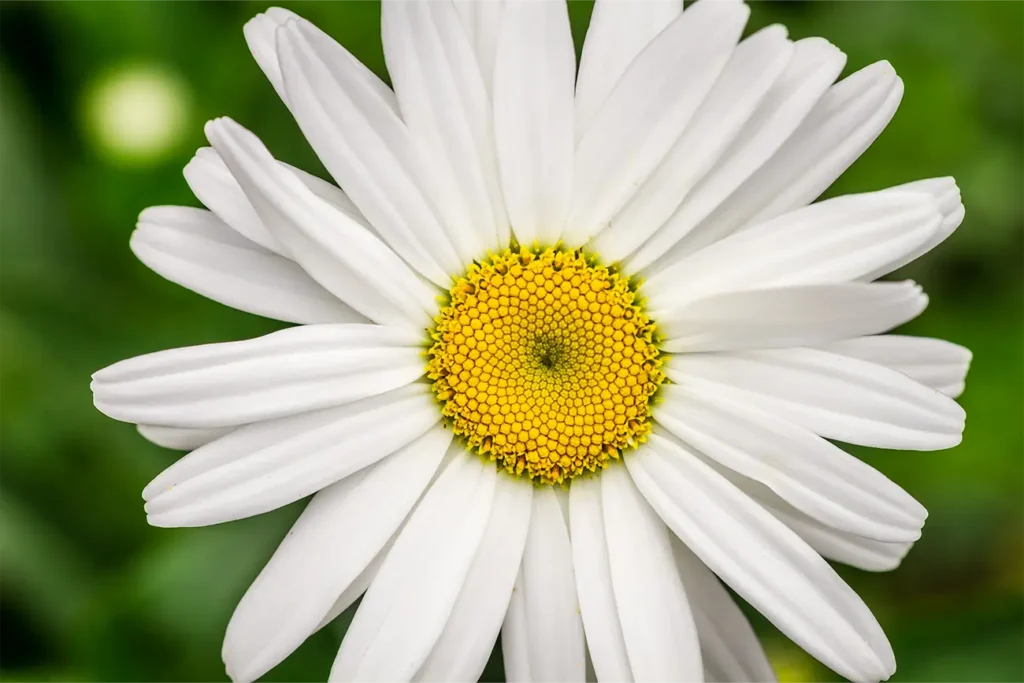
Daisies usually grow between 10 to 20 centimeters tall, sporting a dense, ground-hugging rosette of spoon-shaped leaves. They bloom from early spring to autumn, offering a long-lasting display of cheerfulness in gardens.
Varieties of Daisies
There are numerous daisy varieties, each with unique traits.
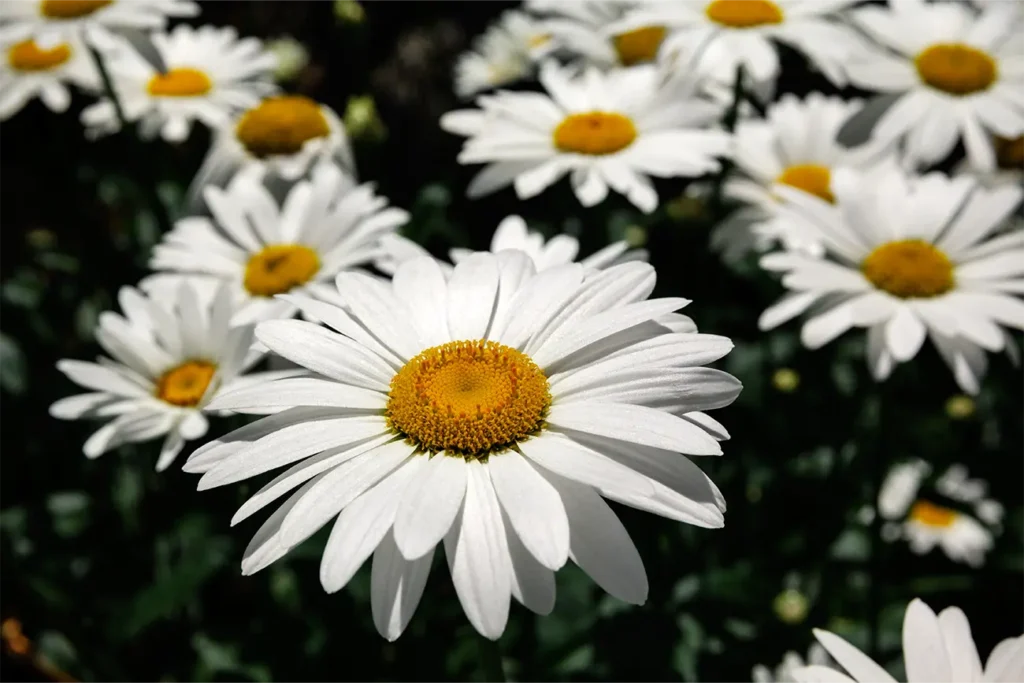
Shasta Daisy (Leucanthemum x superbum): A hybrid with larger flowers, often used in bouquets.
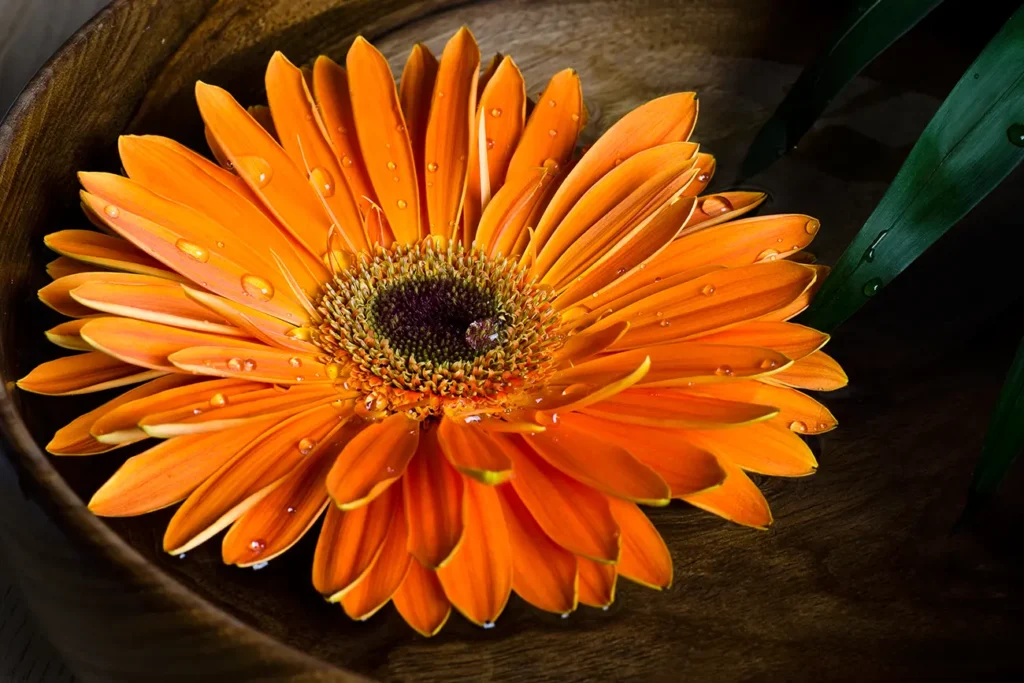
Gerbera Daisy (Gerbera jamesonii): Known for its large, vibrant blooms in an array of vivid colors.
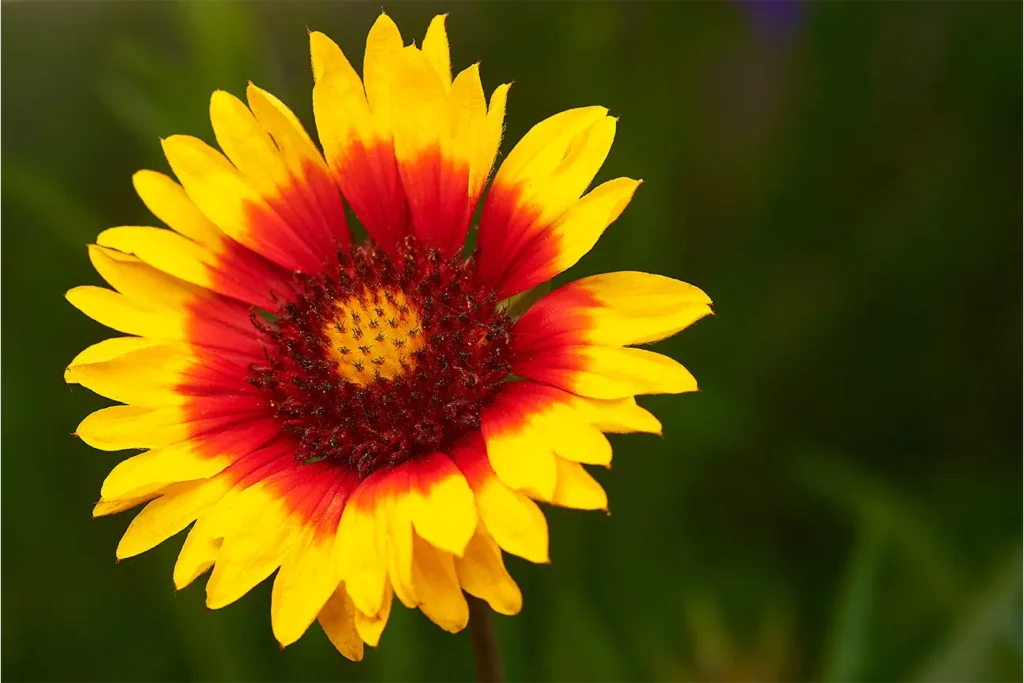
Painted Daisy (Tanacetum coccineum): Offers beautifully colored flowers that are fantastic in gardens and as cut flowers.
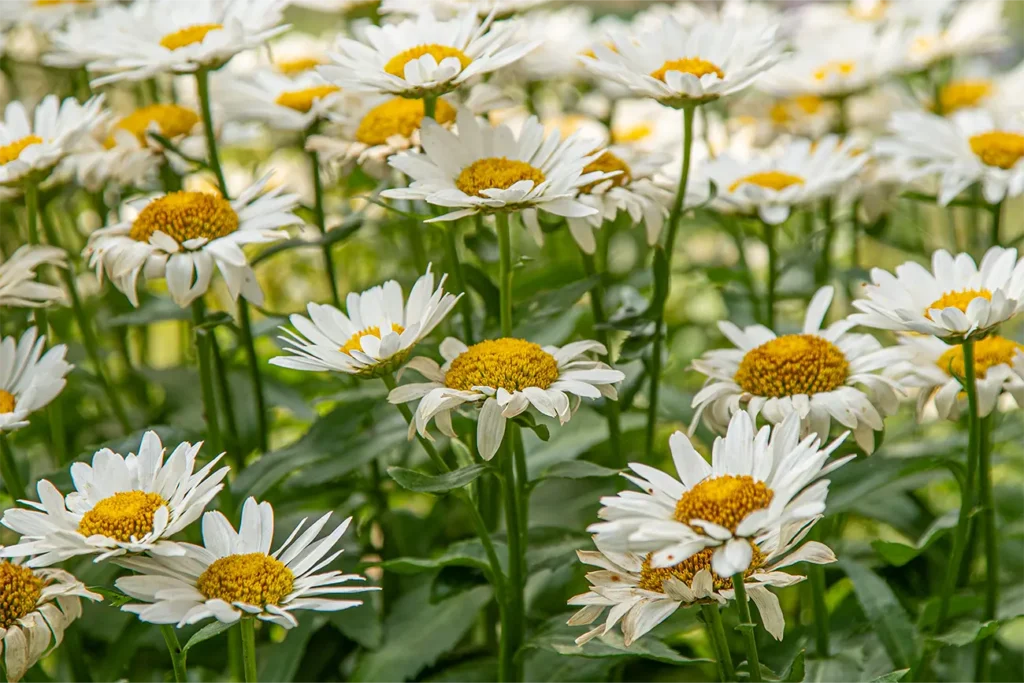
Oxeye Daisy (Leucanthemum vulgare): A wild species that is often seen in meadows and along roadsides.
Growing Conditions and Care
Daisies thrive in full sun to partial shade and prefer well-drained soil. They are remarkably adaptable, making them suitable for a variety of garden settings. Regular watering and occasional feeding will encourage robust blooms, but they are generally low maintenance. Deadheading, or removing spent flowers, will extend their blooming period.
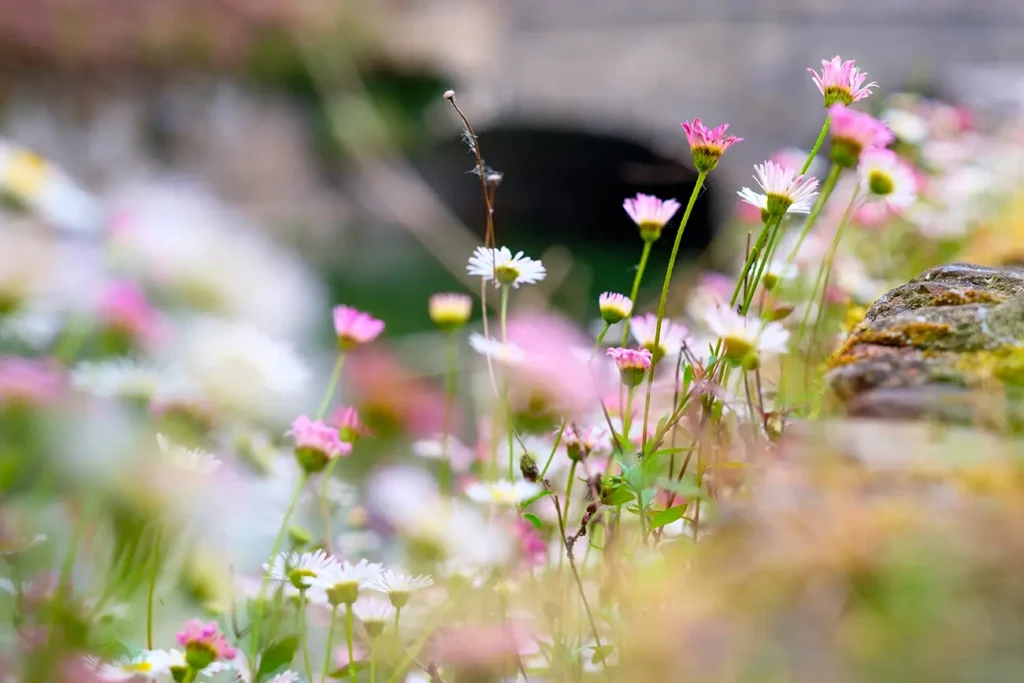
Whether included in a mixed border or used as a charming ground cover, daisies bring a sense of joy and wild beauty to any garden setting. Their ability to blend with other plants and provide long-lasting color makes them invaluable in the perennial garden. Plus, their flowers, when cut, bring the freshness of the garden indoors.
Understanding the depth and versatility of daisies enhances not only our knowledge but also our appreciation of these humble yet powerful plants. They teach us that beauty often lies in simplicity and resilience, echoing a message that is both timeless and profound.
Historical and Cultural Significance of Daisies
The historical and cultural story of daisies is rich with lore and meaning that resonate across time and culture. They remind us of the profound connections between nature and human culture, showing us how deeply entwined are our lives with the flora around us.
Whether in art, folklore, or the kitchen, daisies continue to spread their quiet influence, proving that even the simplest of flowers can have the most enduring impact.
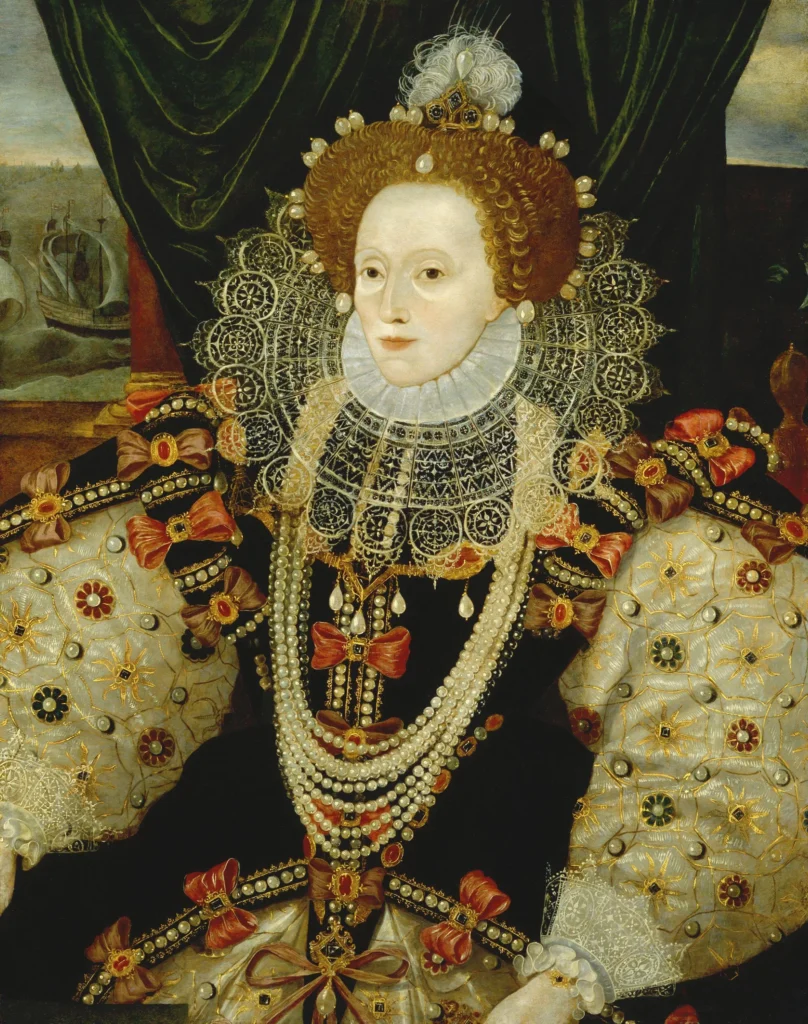
Historical Significance
Daisies have always brought a sense of joy and nostalgia. I remember using daisy chains to crown my daughter during spring picnics, embodying a tradition that spans generations. Such activities not only enriched our family gatherings but also connected us to broader cultural practices involving these flowers.
Daisies have not only decorated fields and gardens but have also played significant roles in medicine and cuisine throughout history.
Historically, Bellis perennis was commonly used in traditional herbal medicine. Known as “bruisewort,” it was applied as a poultice or infused as a tea to treat wounds, bruises, and other inflammations, believed to expedite the healing process due to its anti-inflammatory properties.
In the kitchen, daisies have found their place as more than just garnishes. The leaves of the daisy are edible and can be included in salads, adding a slightly bitter but pleasant flavor.
In some European traditions, daisy buds and petals were pickled or used as a seasoning, adding a subtle floral hint to dishes. The inclusion of daisies in my kitchen garden has been both a culinary adventure and a nod to historical uses. Experimenting with daisy petals in salads and teas has opened up new flavors and brought a delightful twist to traditional recipes, making each meal a little more special.
Cultural Significance
In folklore, literature, and art, daisies have often symbolized purity and innocence, perhaps most famously in Geoffrey Chaucer’s The Canterbury Tales, where they represent the beauty and freshness of spring.
This symbolism extends into Christian iconography, where the daisy is associated with the Virgin Mary, signifying her chastity and humility.
In Renaissance paintings, artists often used daisies in the background to evoke a sense of innocence and the rustic outdoors.
Moving into more modern times, the simple daisy inspired the famous 1960s “Daisy” advertisement, which became a significant symbol in political campaigns due to its powerful imagery of a girl plucking a daisy’s petals before a nuclear explosion.
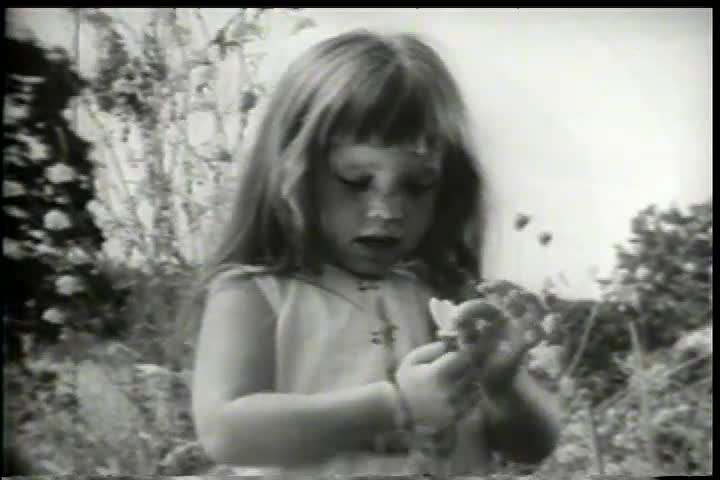
In folklore, daisies are often featured in tales and customs related to love and courtship.
The classic “he loves me, he loves me not” game, where one plucks petals from a daisy to divine the fidelity of a lover’s affection, is a playful yet poignant reflection of the daisy’s role in human emotional expression.
Symbolism and Modern Uses of Daisies
I also use daisies in my own home for their uplifting presence. A simple vase filled with wild daisies can transform a room, bringing a touch of the serene outdoors inside.
During the spring and summer, I often dry their petals to use in homemade potpourri, which captures the essence of sunny days in my living room long after the blooms have faded outdoors.
Just as in my own experiences, the daisy’s blend of classic symbolism and modern utility continues to make it a beloved flower in contemporary life.
From grand celebrations to quiet corners of urban gardens, the daisy’s presence is felt and cherished, proving that its appeal lies in both its beauty and its enduring significance.
Symbolism in Modern Culture
Daisies have maintained their symbolic significance into the modern era, embodying purity, innocence, and new beginnings across various contexts.
This symbolism makes them a popular choice for significant life events, particularly weddings and baby showers.
In weddings, daisies are often chosen for bridal bouquets and decorations to symbolize the start of a new and hopeful journey together for the couple. Their simple yet striking appearance brings a natural and unpretentious beauty to celebrations, aligning perfectly with themes of genuine love and commitment.

In contemporary culture, daisies also represent resilience and transformation, given their ability to thrive in challenging conditions.
This has made them a symbol for campaigns and movements that focus on growth and recovery, such as environmental conservation efforts and mental health awareness, where the daisy inspires hope and renewal.
Modern Uses
Beyond their symbolic use, daisies are incredibly versatile in modern horticulture and design. Urban gardening has embraced the daisy for its adaptability and minimal care requirements, making it a staple in city parks, gardens, and balconies where green space is limited but desired.
Their hardiness and long blooming season make them ideal for adding consistent color and vibrancy to urban landscapes.
In home decor, daisies are frequently used in floral arrangements not only for their visual appeal but also for their longevity as cut flowers.
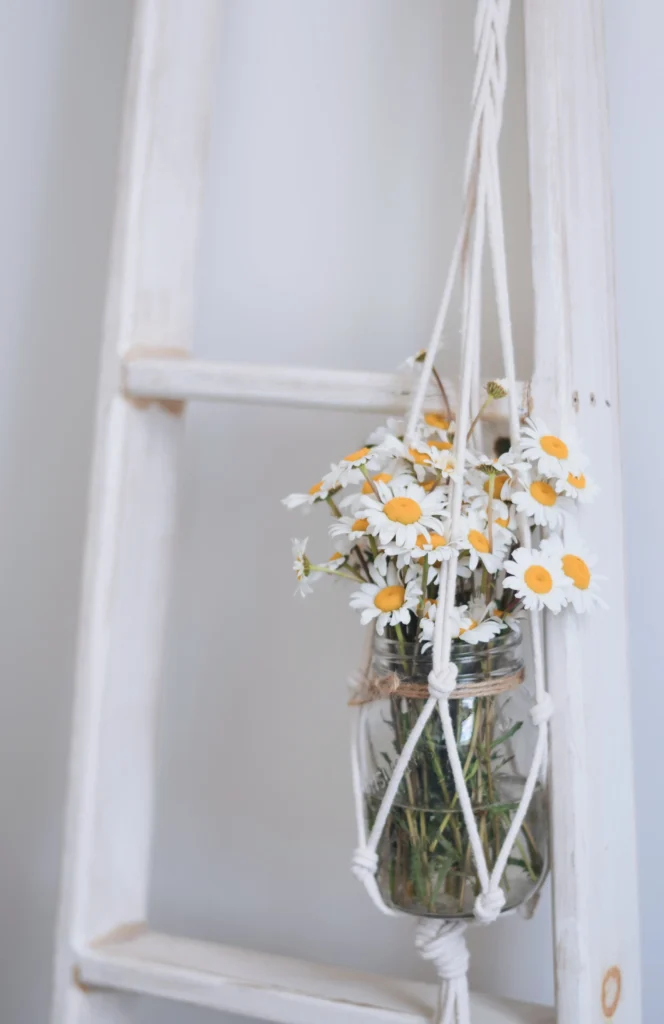
They can brighten up living spaces without the opulence of more exotic blooms, fitting seamlessly into minimalist and rustic interior designs.
Additionally, daisies have found their way into the wellness and beauty industries.
Extracts from daisies are incorporated into skincare products for their purported benefits, such as brightening the skin and improving complexion.
Their gentle nature makes them suitable for use in products targeting sensitive skin.
Daisies in Gardening and Landscaping
In my own garden, I have found that integrating daisies with herbs like rosemary and thyme not only creates a visually appealing mix but also promotes a healthy garden ecosystem. The aromatic oils of these herbs seem to help deter pests, while their flowers attract beneficial insects that aid in pollination.
I also experimented with a border combination of daisies and irises, which proved to be both striking and easy to maintain. The daisies fill in quickly, covering the ground and reducing the need for mulching, while the taller, more structured irises punctuate the landscape with a burst of color.
Incorporating daisies into your garden or landscape not only enhances the space visually but also invites biodiversity, supporting a range of insects and birds.
Their simplicity, coupled with their impact on the environment and versatility in design, makes daisies a smart choice for both novice gardeners and seasoned landscapers.
Whether in a small home garden or a larger ecological project, daisies offer a blend of beauty, function, and sustainability that few other plants can match.
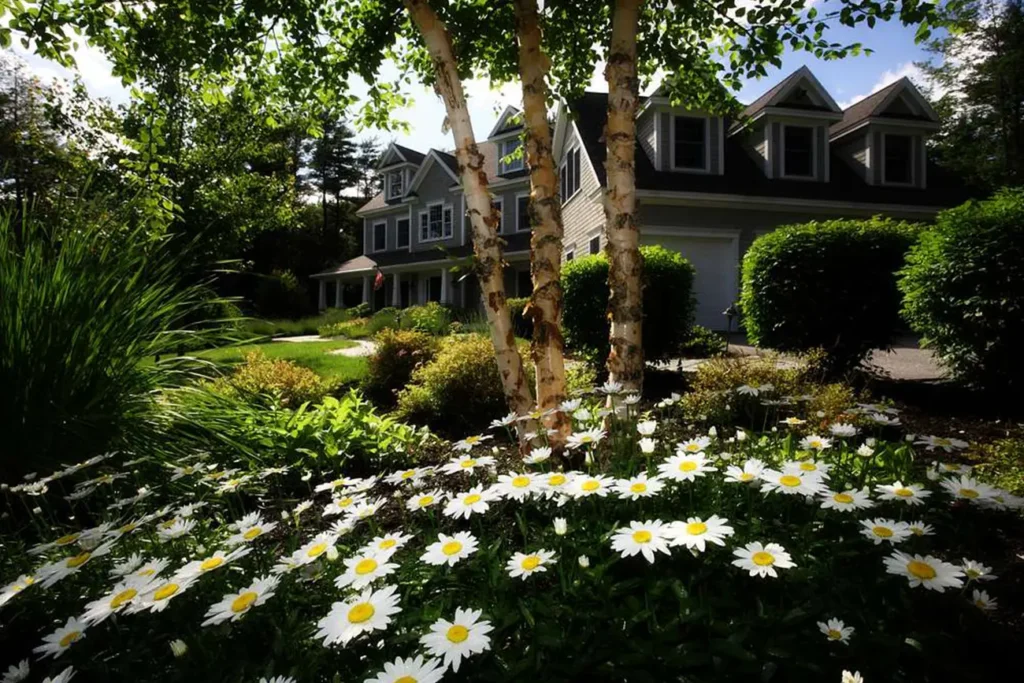
Use in Garden Design and Landscaping
Daisies are a versatile addition to any garden or landscape, celebrated not only for their aesthetic appeal but also for their robustness and ease of growth.
In garden design, daisies are often employed to create a bright, welcoming feel. They can serve as excellent ground covers, filling up spaces with lush foliage and vibrant blooms, or be used to edge garden paths, offering a charming border that guides visitors through the garden.
For larger landscapes, daisies work wonderfully in wildflower meadows where they can grow freely and naturally.
These settings often aim for a balance between control and wilderness, and daisies fit this niche perfectly, attracting pollinators while offering a delightful view.
Moreover, their ability to adapt to various conditions makes them ideal for rehabilitating and beautifying degraded lands or slopes prone to erosion, providing stabilization and color.
Companion Plants for Daisies
When planting daisies, choosing companion plants that complement them in color, size, and growing requirements can enhance your garden’s overall health and aesthetic.

Here are some companion plants that pair well with daisies:
- Lavender: Its silvery foliage and purple flowers contrast beautifully with the white and yellow of daisies, and both plants enjoy similar sunny conditions and well-draining soil.
- Coneflowers (Echinacea): These sturdy flowers share similar growing conditions with daisies and their tall, bold-colored blooms provide a nice backdrop for lower-growing daisy varieties.
- Black-eyed Susans (Rudbeckia): Their golden-yellow flowers with dark centers create a stunning visual harmony with daisies, and together, they can turn any garden space into a riot of colors.
- Sedum: Known for its drought tolerance, sedum offers varied texture and form alongside daisies, making for a low-maintenance garden that thrives throughout the season.
- Grasses: Ornamental grasses like fountain grass or blue fescue add texture and movement to a garden featuring daisies, enhancing the naturalistic feel and providing contrast.
How to Grow Daisies
Growing daisies can be a rewarding experience for any gardener. By understanding their basic needs and monitoring their growth, you can enjoy these cheerful blooms from spring to fall.
Their simplicity in care, resilience, and long blooming season make them an excellent choice for both new and experienced gardeners looking to brighten up their garden landscapes.
Ideal Growing Conditions
Daisies are remarkably adaptable and can thrive in a variety of settings, but they do have preferences that can help them perform at their best:
- Climate: Daisies are hardy in a wide range of climates, typically thriving in USDA zones 4 through 8 (I’ve included a zone map for your easy reference below 😉). They can tolerate colder temperatures but will flourish in moderate climates where extreme heat and frost are not common.
- Soil Type: Well-draining soil is crucial for daisies to prevent root rot. They prefer neutral to slightly acidic soil with a pH between 6.0 and 8.0. Adding organic matter like compost can improve soil structure and nutrient content, promoting healthier growth.
- Sun Exposure: Daisies love the sun and require at least 6 hours of direct sunlight daily. While they can tolerate partial shade, too little sun can lead to sparse blooms and leggy plants.

Planting and Caring for Daisies
- Choosing Your Planting Site:
- Select a spot that receives ample sunlight. If you’re planting in a particularly hot climate, afternoon shade can help protect the plants from scorching.
- Soil Preparation:
- Amend the soil with organic compost to enhance its fertility and drainage. Loosen the soil to about 12 to 15 inches deep to allow the roots to penetrate and establish easily.
- Planting:
- Space the plants about 12 to 24 inches apart, depending on the variety (how big the particular variety of daisy you’re planting), to ensure good air circulation and give them room to spread.
- Plant at the same depth as the container they were growing in. Water thoroughly after planting to settle the soil around the roots.
- Watering:
- Daisies need regular watering, especially during dry spells. However, allow the soil to dry out slightly between waterings to prevent overwatering.
- Fertilizing:
- Feed your daisies with a balanced, slow-release fertilizer in the spring to support their growth and flowering. Avoid over-fertilizing, which can promote more foliage than flowers.
- Pruning and Maintenance:
- Deadhead (remove the flower at the base of the head) spent flowers regularly to encourage more blooms and extend the flowering period.
- Cut back the foliage in late fall or early spring to promote healthy, dense growth.
- Winter Care:
- In colder zones, mulch around the plants after the first frost to protect the roots from freezing temperatures.
Common Challenges When Growing Daisies
- Pest Problems: Aphids and spider mites can be a problem. Regularly inspect plants and treat infestations early with insecticidal soap or neem oil.
- Diseases: Powdery mildew and root rot are common if conditions are too damp. Ensure good soil drainage and air circulation, and avoid overhead watering.
- Leggy Growth: This often occurs in too much shade or overly rich soil. Ensure adequate sunlight and balance soil nutrients with proper fertilization practices.
I’ve found that integrating a simple drip irrigation system helps maintain the perfect moisture level for daisies, which has significantly reduced the incidence of fungal diseases like powdery mildew.
I also like to plant daisies alongside lavender, as they both require similar light and soil conditions, and the lavender seems to naturally help deter pests from the daisies.
Moreover, maintaining a routine to check for pests and diseases weekly has allowed me to catch any issues early before they become problematic, ensuring my daisies stay healthy and vibrant throughout the season.
Daisy Fun Facts
- A Daisy’s Structure Is Unique: What appears to be a single flower is actually a composite of two types of flowers – disk florets and ray florets. The inner section consists of tiny disk florets packed closely together, and the outer part comprises the ray florets, which look like the petals.
- They Can Tell Time: Daisies are known as “day’s eye” because the flower opens at dawn and closes at dusk. This unique trait was what originally gave daisies their name, derived from the Old English term “dæges ēage,” meaning “day’s eye.”
- Daisies Are Almost Everywhere: One of the most widespread wildflowers, daisies can be found on every continent except Antarctica. This adaptability makes them incredibly resilient and a staple in many different ecosystems.
- Record Holders: The largest daisy species is the giant Gerbera daisy, which can grow up to 18 inches across. On the other end of the scale, some wild daisy species can have blooms as small as a dime.
- Medicinal Uses: Beyond their traditional use in folk medicine to treat wounds, daisies are known to have anti-inflammatory properties. Extracts from daisies are used in homeopathy as a remedy for back pain.
- Edible Flowers: The young leaves and flower petals of the common daisy (Bellis perennis) are edible and can be used in salads. The leaves have a slightly bitter taste, while the petals add a lovely mild flavor and make for an attractive garnish. Chamomiles, often enjoyed in tea, are a variety of daisies.
- Cultural Impact: The daisy has made appearances in various cultural artifacts, from the famous WWII-era “Keep Calm and Carry On” posters, which featured a crown of daisies, to being a favorite flower of Queen Elizabeth I of England, who often chose a daisy motif in her personal emblems.
- Surprising Uses: Daisies have been used in traditional binding materials. Historically, the sap from daisy stems served as a useful glue for woodworkers.
- Symbol of Purity and Innocence: In Norse mythology, the daisy is associated with Freya, the goddess of love, beauty, and fertility, which imbues it with additional symbolic meaning regarding childbirth, motherhood, and new beginnings.
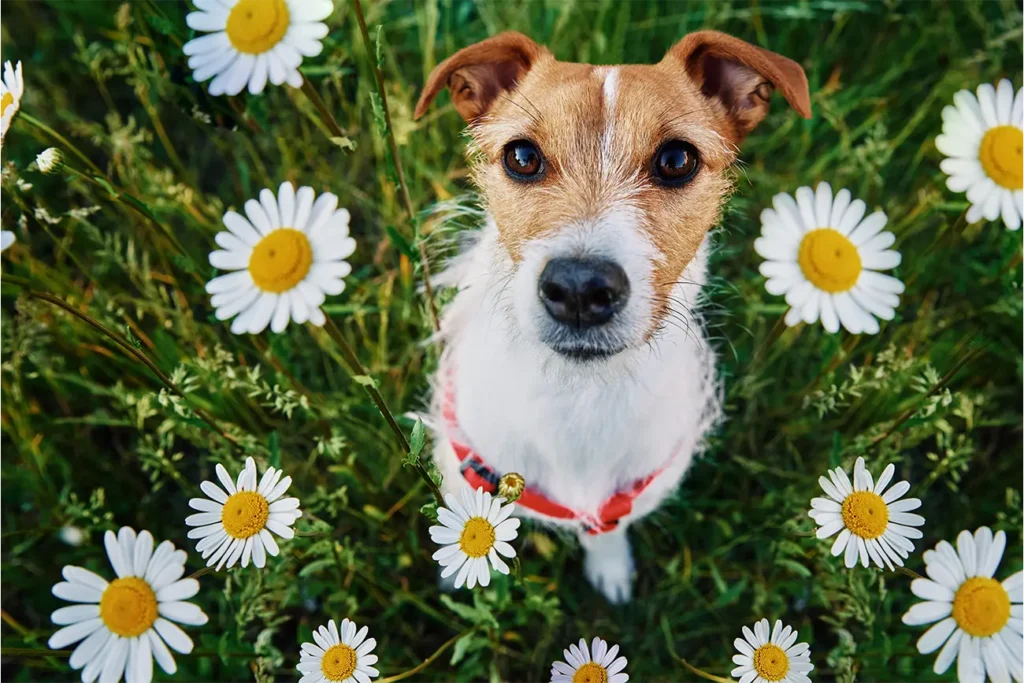
Conclusion
Daisies, with their simplicity and myriad of species, continue to fascinate and inspire people around the world.
Their ubiquity in various forms—from wild meadows to sophisticated garden cultivars—speaks to their universal appeal and enduring beauty.
Whether you’re a gardener, a floral enthusiast, or simply someone who appreciates the joy that flowers can bring, daisies offer a wealth of interest and utility.
Understanding the depth and versatility of daisies enhances not only our knowledge but also our appreciation of these humble yet powerful plants. They teach us that beauty often lies in simplicity and resilience, echoing a message that is both timeless and profound.
It’s easy to see why the Daisy is April’s flower of the month.

